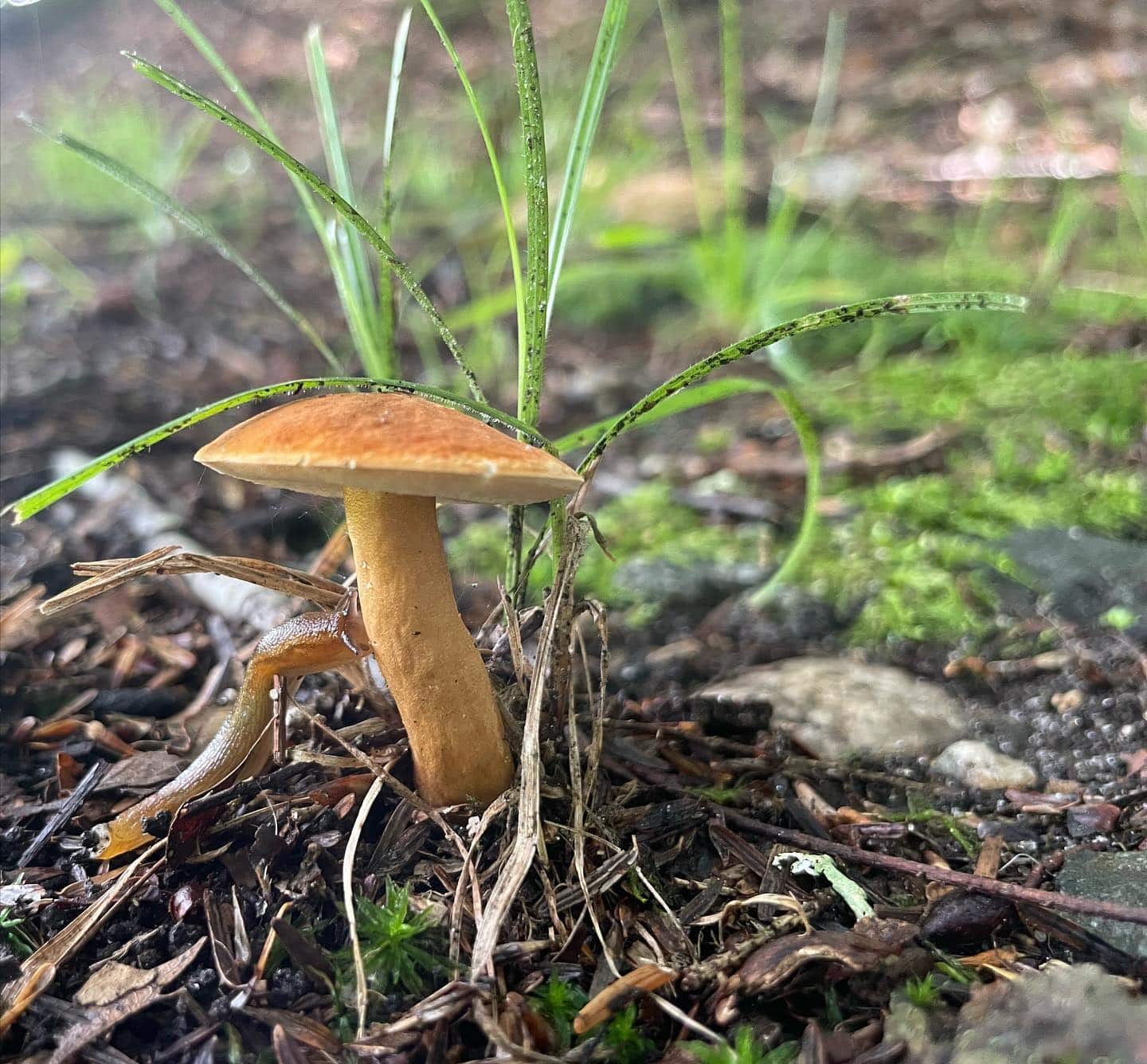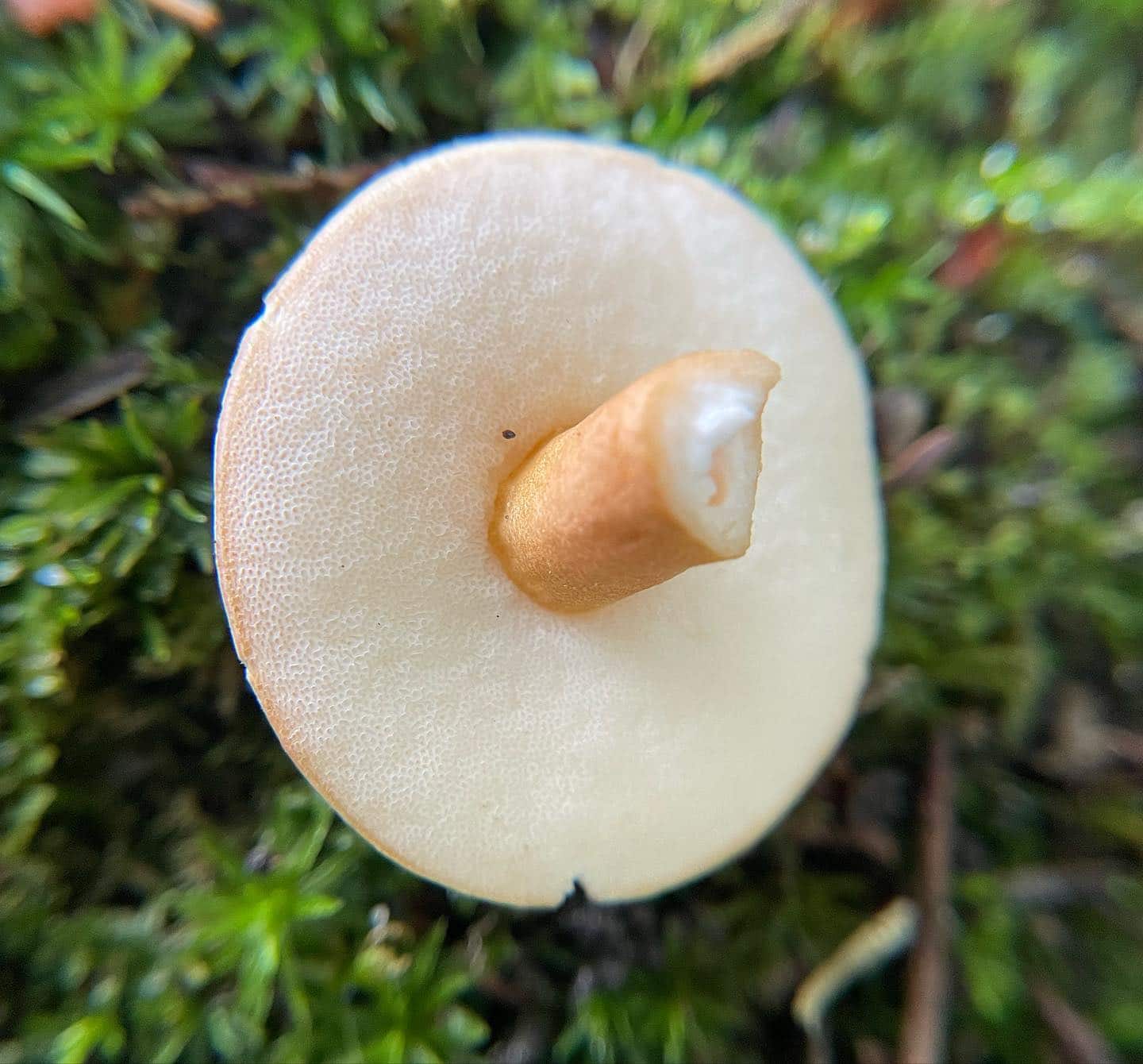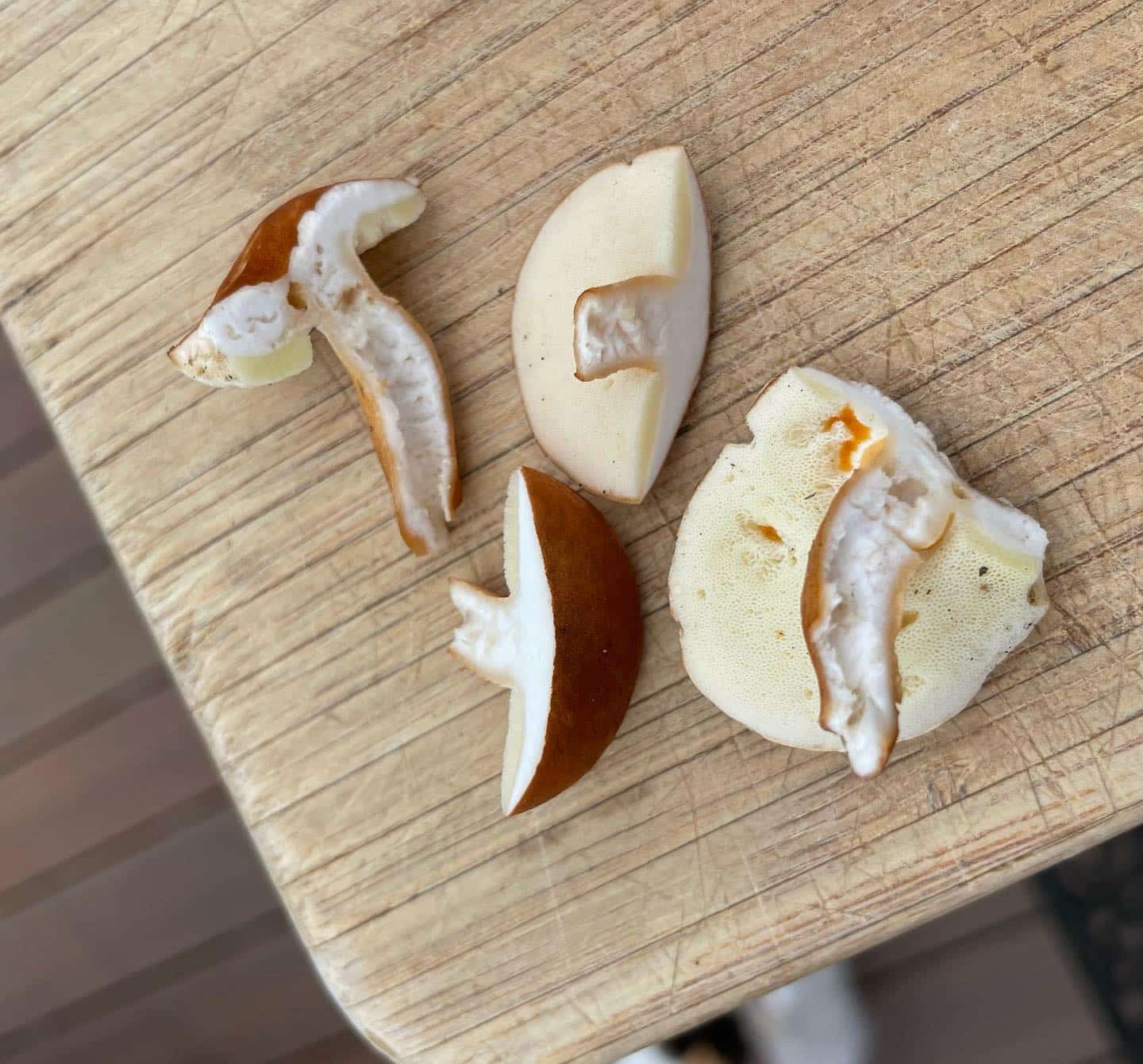Page Created by Connecticut Foraging Club
Upcoming Events | Meet the Instructors | Plant Archive | Mushroom Archive
----------------
Upcoming Events | Meet the Instructors | Plant Archive | Mushroom Archive
----------------
The Chestnut Bolete (Gyroporus castaneus) is an edible mushroom that can be found fruiting summer to fall.

The chestnut bolete can be found in Europe and eastern North America. It grows singly or in small groups near hardwood trees, often oak and sweet chestnut. It is unclear if the mushroom has a mycorrhizal or saprobic relationship with the trees.

Chestnut boletes have stems with cottony, chambered interiors when young. The stems become completely hollow as the mushroom ages. The cap is chestnut colored, becoming darker with age. Under the cap, there are tight white pores that do not bruise. The spore print will be pale yellow.

Chestnut boletes are small compared to other boletes. Interestingly, they are more closely related to earthballs than boletes.
Chestnut boletes tend to have good resistance to bugs. They are mildly nutty when young. Some people have gotten sick from eating this mushroom. Start with eating the mushroom in small amounts to see how your body reacts.
There are 2 other Gyroporus species in Connecticut, but these have reddish and purplish tones on their caps. There is also a chunkier form of Chestnut bolete that appears later in the season.
--
Written by Amy Demers, founder of the Connecticut Foraging Club. To learn more about foraging in Connecticut, check out our upcoming classes.






